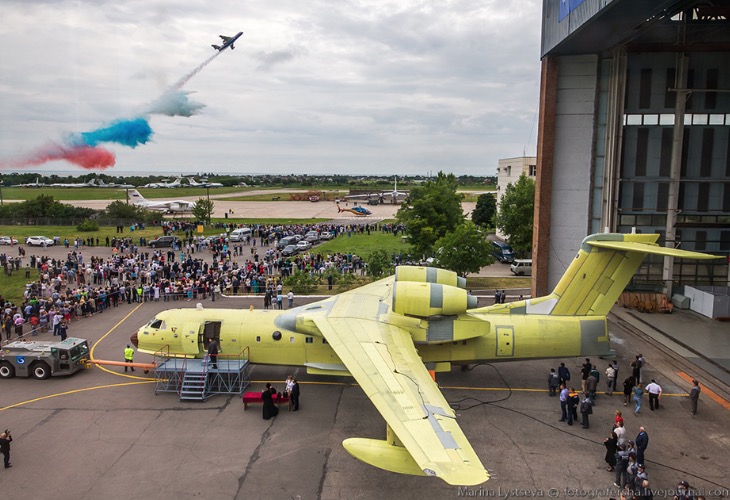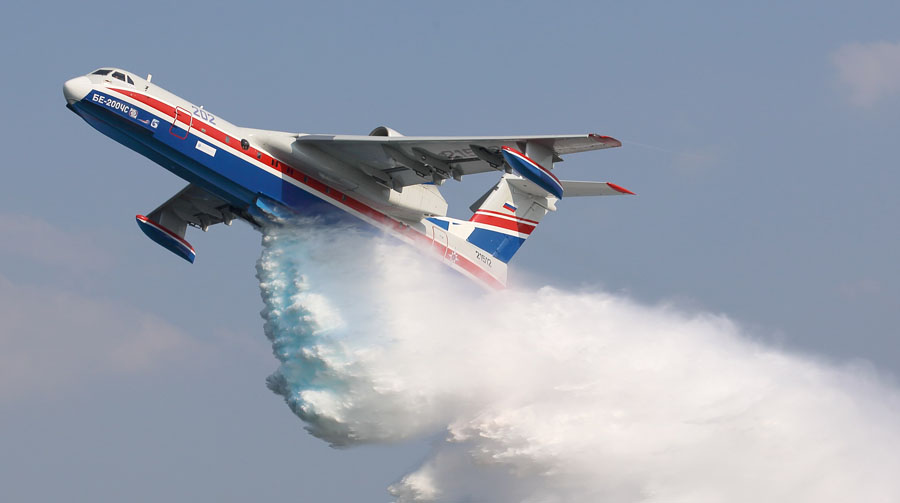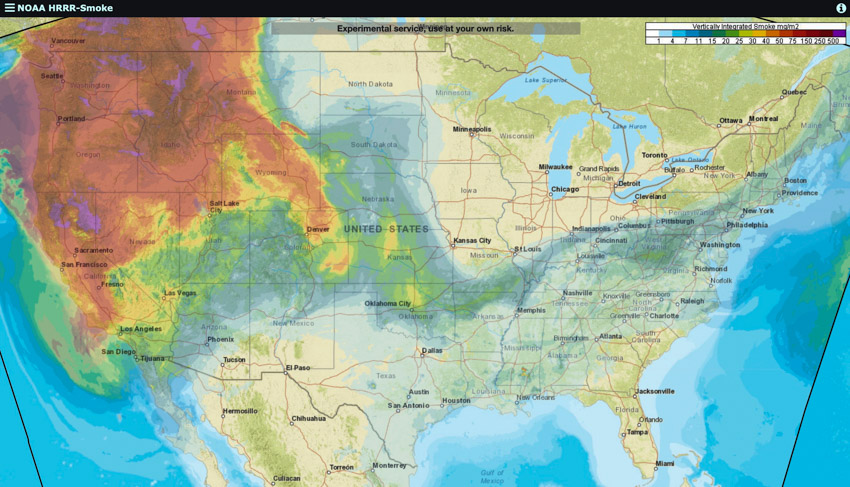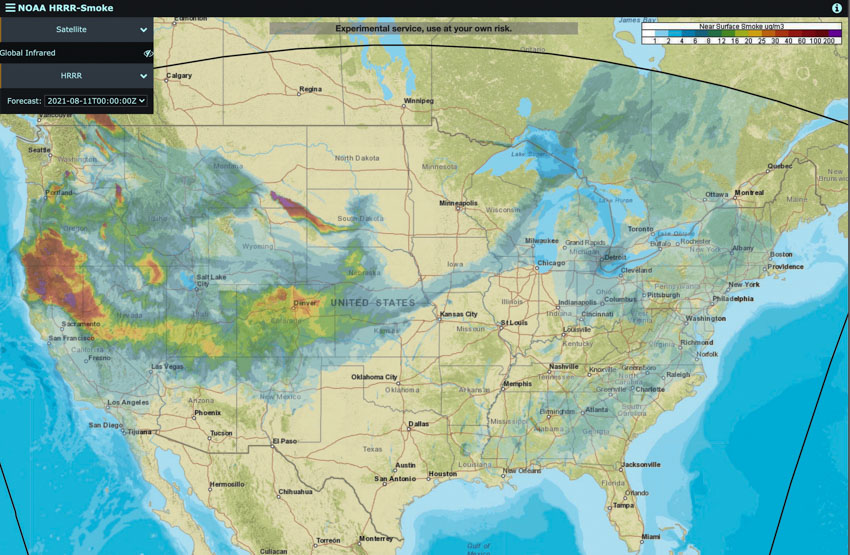
(This article was first published on Fire Aviation)
This wildfire season in the 48 contiguous states so far is turning out to be one to be remembered. Today nearly 25,000 personnel are working on suppressing 93 large fires across 14 states. In addition, another 47 fires are being managed under a strategy other than full suppression.
In May the Forest Service said they would have 34 large air tankers (LAT) if needed — 18 on Exclusive Use Contracts guaranteed to work, plus 8 “surge” LATs guaranteed to work for a shorter period of time, and another 8 on Call When Needed (CWN) status. Of those 16 surge and CWN aircraft, only 5 could be produced in July. One LAT, a 737 owned by the New South Wales Rural Fire Service in Australia, has flown across the Pacific to lend a hand.
On July 14 the National Interagency Fire Center upgraded the Preparedness Level to 5, which was the earliest date in 10 years.
There is a shortage of Incident Management Teams (IMT). All available Type 1 IMTs, 14 of them, are assigned, plus 24 Type 2 IMTs. The National Multi-Agency Coordinating Group (NMAC) decreed on July 18 that all requests for Area Command, National Incident Management Organization (NIMO), Type 1, and Type 2 IMTs must be approved by them.
All of the LATs available and under contract to the US Forest Service are being used. There are no more. So what’s left?
The FS frequently says they can call on eight military C-130’s equipped with 3,000-gallon Modular Airborne FireFighting Systems (MAFFS). Since the 1970s the agency has committed a great deal of time and taxpayer funds coordinating with the Defense Department, annual training and certification, and when activated, paying the large costs associated with operating the aircraft. Each requires a seven-person crew, additional support personnel, and often a third conventional C-130 for every two MAFFS that are activated. They have not changed much since the 1970s. Instead of spraying retardant out of the lowered cargo ramp it goes out the left side troop door. They have two onboard air compressors that occasionally work, but still rely on huge industrial grade compressors on the ground to pressurize the spray system.

Until a couple of days ago only five of the eight MAFFS had been working for the last several weeks. Late this week a sixth was brought on. Four military bases each have two MAFFS and are responsible for having personnel available to activate them in less than 48 hours. Two National Guard bases have activated only one. Wyoming’s 153rd Airlift Wing and California’s 146th Airlift Wing each have one parked.
During a virtual meeting July 27 with Western Governors to discuss wildfire preparedness, President Joe Biden was told that their states need more aviation resources, help with obtaining aviation fuel, and more boots on the ground.
On August 4 Agriculture Secretary Tom Vilsack said the Governors’ request for additional aviation resources, “… Came to my desk. One of the challenges we’re working on right now is making sure we get the Defense Department personnel necessary to fly the planes. So sometimes it’s not even the planes, it’s the pilots, the people who know how to fly these planes…I was given instructions to… make sure we have the people in the planes to fly them.”
The Secretary was most likely referring to the MAFFS. But it is the Secretary of Defense who needs to take action to provide flight crews.
OPINION
The Forest Service was only able to acquire, to help protect our homeland from wildfires, 31 percent of the CWN aircraft they said they expected, and 75 percent of the MAFFS.
If what we’re doing is not working, will continuing to do the same thing bring different results?
If the Air Force can’t 100 percent support the MAFFS, an evaluation of the program by a completely independent group is warranted. Is there a better way to provide this service, or should a MAFFS 3.0 be designed and built? The analysis must be configured to insure that the FS does not have the ability to skew the objectives or the findings to fit any preconceived biases. And I’m not recommending a multi-million-dollar “study” that could take years. Simply get 8 to 10 subject matter experts in the same room to come up with a plan.
The President needs to order the Department of Defense to take care of two important issues:
- Staff the MAFFS with qualified personnel so the equipment can be used to help protect our homeland.
- Order the Air Force to complete the conversion of the seven Coast Guard C-130’s into air tankers. They have been slow-walking this project and the $150 million Congress appropriated to get it done since December, 2013. Coulson Aviation has converted a C-130 into an air tanker in six months. It may not have required a new wing box, but eight to ten years is not reasonable.
If the President does nothing to kick the Air Force in the butt, Congress should hold hearings.
Apparently no viable contingency plans have been developed for this shortage of LATs by NMAC, Interagency Airtanker Board, and the leaders in the FS, National Park Service, Fish and Wildlife Service, Bureau of Indian Affairs, and the Bureau of Land Management.
Not surprisingly, having only 18 LATs on exclusive use contracts is a strategy doomed to failure. That number is 26 fewer than were on EU contracts in 2002. Is this progress?
One of the lessons learned this year and others like it, is, Congress must appropriate adequate funds for the five land management agencies to pay firefighters a living wage, conduct more prescribed fires, and have at least 40 large air tankers and 50 large Type 1 helicopters on exclusive use 10-year contracts instead of 1-year contracts.
We often say, “air tankers don’t put out fires”. Under ideal conditions they can slow the spread which allows firefighters on the ground the opportunity to move in and suppress the fire in that area. If the winds are too strong or firefighters are not nearby, in most cases the flames will often burn over, through, or around the retardant. During these unprecedented circumstances brought on by the pandemic and drought we need to rely much more on aerial firefighting than in the past. And there must be an adequate number of firefighters available to supplement the work done from the air. It must go both ways. Firefighters in the air and on the ground supporting each other.
For new fires that have a suppression objective, attacking them with overwhelming force from both the ground and the air can sometimes keep a small fire from becoming a megafire that burns homes and threatens the safety of our citizens.
Here is what I have been saying since 2012:










